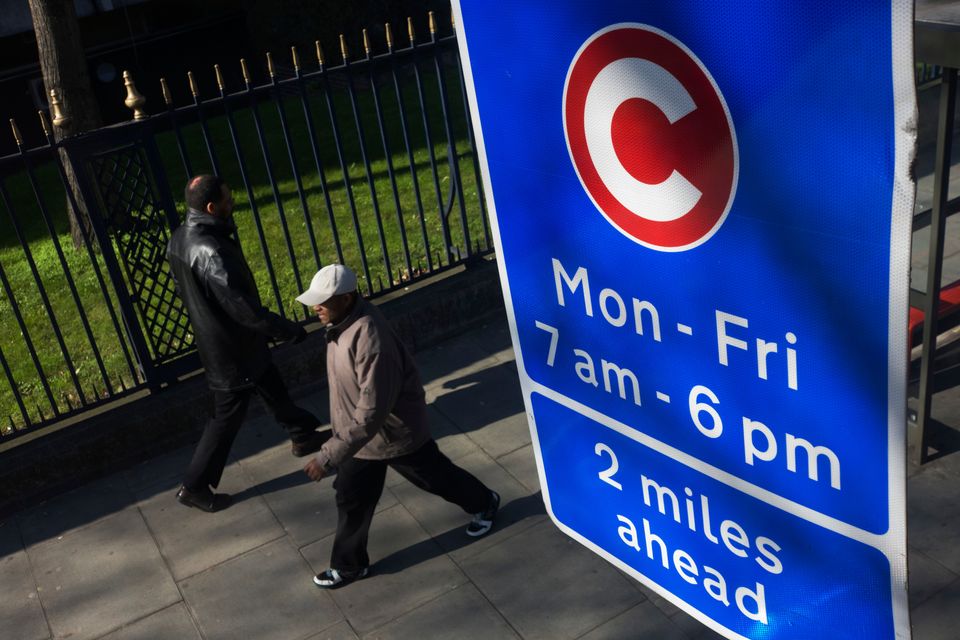Revealed: Congestion charges, lower insurance costs for car pooling and phasing out rebate schemes - Government’s new draft transport strategy laid bare


New laws should be passed to bring in congestion charges, according to the Government’s new draft transport strategy.
Diesel rebates should also be phased out, as well as other subsidies on fossil fuels, in what is likely to be a further hit to households and businesses, a draft of the new Demand Management Strategy states.
Motorists who drive less, car-share and carpool could be paying less for their car insurance every year, according to the new plan from Green Party leader Eamon Ryan.
The draft strategy says the Government should work with the insurance industry to encourage motorists to be more sustainable.
It recommends new laws be put in place to bring in congestion charges, as well as giving additional powers to the National Transport Authority and local authorities so they can be implemented.
The laws would also legislate for urban road-user charging – where drivers are charged on the roads they drive on and/or clean air zones or low-emission zones.
The Diesel Rebate Scheme (DRS), which gives haulage and passenger transport companies tax back on mineral oil, should also be phased out.
Options should also be put in place for the “gradual phase-out” of subsidies on fossil fuels, such as previous cuts to excise duty put in place by the Government.
Read more
Petrol and diesel excise duties should be “equalised” so that people are incentivised to alternatives to fuel.
A Government source emphasised these recommendations will not be implemented immediately. They are part of a long-term strategy and would only be brought in when suitable alternatives are put in place.
It will be up to city and county councils to bring in congestion charges if they are needed and where they are needed.
Mr Ryan, who will bring the strategy to Cabinet today, has previously said congestion charges are not part of plans to discourage private car use in the busiest urban areas.
The strategy says they are not a “prescriptive” set of “top-down actions” and instead indicate the “policy direction” which is needed at a national level.
The new Demand Management Strategy says all taxes and tolls which currently apply to transport should be reviewed.
Other charges should also be considered, such as congestion charges, distance-based road-user charges, clean air zones and extra charges on the weight of vehicles.
Government should consider the impact these charges would have on behaviour, fuel and engine choice.
The strategy points to London, where, since these charges and low-emission zones were introduced, congestion fell by a third, bus travel increased by a third and 10pc of journeys became walking journeys.
Over the last two years in London, £884m (€1bn) was generated in net revenue from the congestion charge and low-emission zones. The money is reinvested in transport services in the city.
The strategy recommends that existing laws should be reviewed to see if congestion charges can be brought in through amendments to existing legislation or if new laws are needed.
However, shopping centres and business parks outside of city centres will not escape these charges, as it is recommended that local authorities should be given powers to put “parking levies” on these establishments.
A working group in the departments of Finance and Transport should be set up to look at what measures can be brought in in the short term – for example, a weight-based vehicle tax.
The DRS should also be removed under the recommendations in the strategy. It is currently underpinned by the European directive on energy taxation.
However, this is currently being revised.
It is “probable” that Ireland will also drop the DRS once there is no longer EU underpinning for the scheme, according to the strategy.
The Government should also work with the insurance industry to encourage motorists to be more sustainable, according to the plan.
“Telematic technology” may be used to measure driver behaviours, including the distance driven. This would reward good driver behaviour and offer discounts to drivers who achieve targets set out by insurance companies – such as lower premiums for lower mileage.
The strategy warns that data protection issues are considered here and that politicians should bear this in mind.
The strategy also aims to reallocate road space so that journey times are reduced for drivers, public transport users, business and freight. Congestion is projected to cost €2bn by 2040.
After sign off by cabinet ministers today, the strategy will go to public consultation.
Certain measures will be rolled out in urban areas, first where there is greater public transport, walking and cycling availability. The strategy comes as part of the Government’s investment and supports for public transport, walking, cycling and electric vehicles.
Join the Irish Independent WhatsApp channel
Stay up to date with all the latest news










